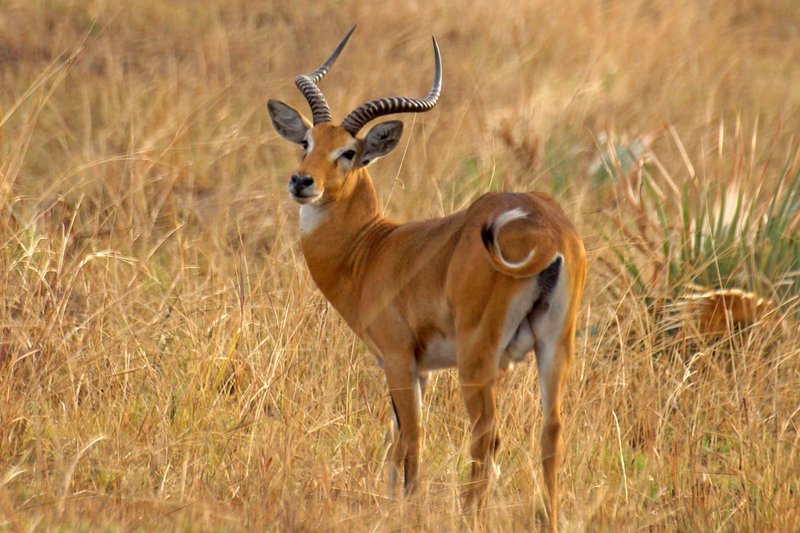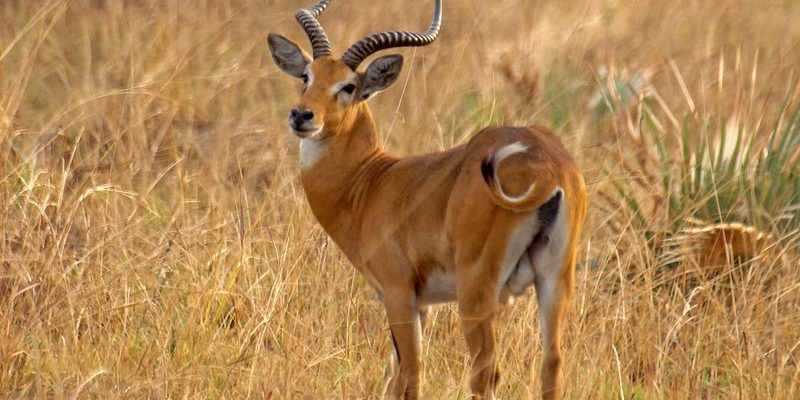
Let’s take a closer look at the Ugandan kob. Imagine you’re walking through one of Uganda’s beautiful national parks, and you stumble upon a herd of these animals grazing peacefully. They might seem like gentle creatures, but like any animal, they can exhibit unexpected behaviors when threatened. In this article, we’ll explore whether the Ugandan kob can pose a danger to humans and what you should know if you encounter one.
The Ugandan Kob: An Overview
The Ugandan kob (*Kobus kob thomasi*) is a medium-sized antelope found primarily in Uganda, although it also roams parts of neighboring countries. They are recognized for their striking reddish-brown coats and the males’ impressive curved horns, which can reach lengths of up to 36 inches. Kob are social animals, often found in herds that can range from a few individuals to several hundred.
These antelopes are primarily grazers, munching on grasses and vegetation near water sources. They thrive in savannas, wetlands, and open grasslands. Their habitat is essential for their survival, as it provides not just food but also safety from predators. However, being preyed upon doesn’t mean they’re entirely defenseless.
Kobs possess strong legs that allow them to make incredible leaps—sometimes up to ten feet in the air. This agility helps them escape predators like lions and hyenas. While they are not aggressive by nature, their ability to run fast and jump high can make them seem intimidating if you’re caught off guard.
Are Ugandan Kobs Dangerous to Humans?
Honestly, the short answer is no; Ugandan kobs aren’t inherently dangerous to humans. These antelopes tend to be shy and avoid confrontations. However, like any wild animal, they can react defensively if they feel threatened. It’s important to acknowledge that their sharp horns can certainly cause injury if a human gets too close or inadvertently provokes them.
Here’s the thing: while they usually flee from humans, their behavior can change if they’re cornered or protecting their young. Mother kobs are particularly protective, and a startled mother may charge at a perceived threat. So, if you find yourself observing these beautiful creatures in the wild, keeping a safe distance is wise.
Understanding Ugandan Kob Behavior
The behavior of Ugandan kobs is fascinating and offers insights into how they interact with their environment and potential threats. Typically, they are known for their alertness and keen senses. Their large eyes sit high on their heads, giving them a broad field of vision to spot predators or dangers.
You might notice that when they feel uneasy, kobs will gather together in groups, often facing outward. This collective vigilance allows them to keep watch for threats more effectively. In moments of danger, they communicate through subtle body language—like ear positioning and tail movements—to alert others in the herd.
Interestingly, kobs also engage in a behavior known as “lekking.” During mating season, males gather in specific areas to display their dominance and attract females. This is less about aggression and more about showcasing their physical strength and health through impressive leaps and displays of their horns.
Encounters with Ugandan Kobs: What to Expect
If you’re lucky enough to encounter Ugandan kobs in the wild, it’s usually a peaceful experience. These animals are more likely to flee than fight, so the chances of a dangerous encounter are minimal. That said, it’s essential to approach wildlife with respect and caution.
In national parks where kobs roam freely, park rangers often provide guidelines on how to interact with wildlife. Always keep a safe distance, ideally at least 50 yards away. Using binoculars or a camera with a zoom lens is a great way to observe them without intruding on their space.
You may also want to be aware of your surroundings. If you’re hiking or driving through their territory, pay attention to their behavior. If you notice kobs becoming agitated or alert, it could signal that you’re too close or that a predator is nearby.
Comparative Risks: Kobs vs. Other Wildlife
When looking at wildlife interactions, it’s helpful to compare risks. Many animals, like lions, elephants, or even hippos, are known to be more aggressive and protective than Ugandan kobs. While elephants can be territorial, and hippos are notorious for being dangerous in water, kobs generally prefer to avoid conflict.
That said, sometimes, the more docile creatures can still pose risks in specific situations. For example, while it’s rare, there have been reports of kobs kicking when trapped or frightened. It’s not because they want to be aggressive; it’s simply a survival instinct.
In terms of wildlife encounters, kobs are considered to be on the lower end of the danger scale. Most safaris and wildlife tours emphasize the beauty of observing these animals and their natural behaviors, underscoring that the thrill of the encounter comes from appreciation rather than fear.
Wildlife Conservation and Safety
As with many species, conservation plays a crucial role in ensuring the safety of both Ugandan kobs and humans. Habitat destruction, poaching, and climate change threaten their populations. By protecting their environment and promoting sustainable tourism, we can help maintain their habitats while enjoying the beauty of nature.
Whenever you visit wildlife reserves, consider supporting local conservation efforts. Eco-friendly practices, such as respecting distances from wildlife and following park guidelines, contribute to the ongoing survival of species like the Ugandan kob. This way, we can enjoy safe encounters without compromising the safety or well-being of these magnificent animals.
Final Thoughts on Ugandan Kobs
In summary, the Ugandan kob is not a danger to humans. With its graceful presence and captivating behavior, this antelope adds beauty to the African landscape. By understanding their behavior, respecting their space, and practicing responsible wildlife tourism, we can have safe and enjoyable experiences while appreciating the wonders of nature. So, the next time you’re in Uganda and see a kob, take a moment to admire it from a distance—it’s a great way to connect with wildlife without putting yourself at risk!

